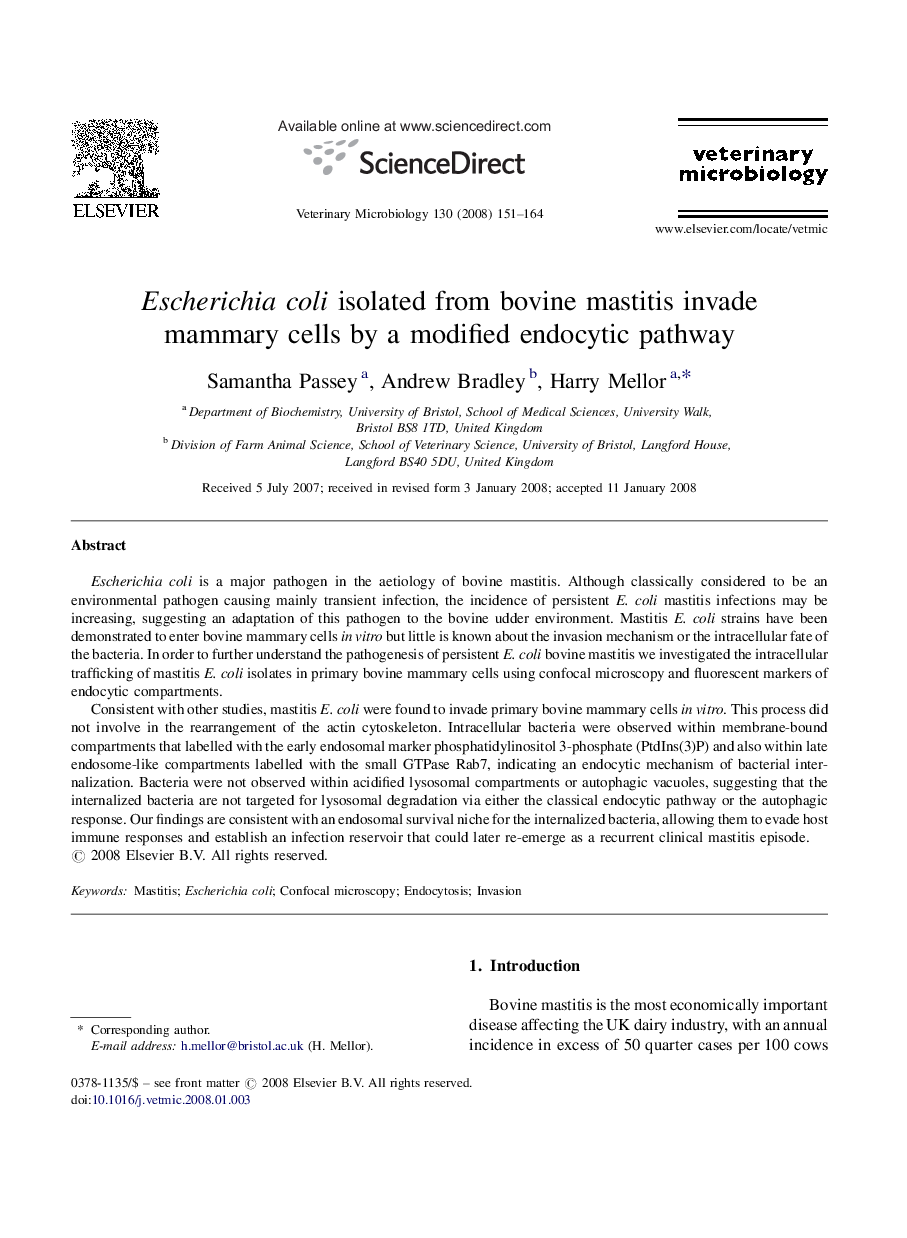| Article ID | Journal | Published Year | Pages | File Type |
|---|---|---|---|---|
| 2468817 | Veterinary Microbiology | 2008 | 14 Pages |
Escherichia coli is a major pathogen in the aetiology of bovine mastitis. Although classically considered to be an environmental pathogen causing mainly transient infection, the incidence of persistent E. coli mastitis infections may be increasing, suggesting an adaptation of this pathogen to the bovine udder environment. Mastitis E. coli strains have been demonstrated to enter bovine mammary cells in vitro but little is known about the invasion mechanism or the intracellular fate of the bacteria. In order to further understand the pathogenesis of persistent E. coli bovine mastitis we investigated the intracellular trafficking of mastitis E. coli isolates in primary bovine mammary cells using confocal microscopy and fluorescent markers of endocytic compartments.Consistent with other studies, mastitis E. coli were found to invade primary bovine mammary cells in vitro. This process did not involve in the rearrangement of the actin cytoskeleton. Intracellular bacteria were observed within membrane-bound compartments that labelled with the early endosomal marker phosphatidylinositol 3-phosphate (PtdIns(3)P) and also within late endosome-like compartments labelled with the small GTPase Rab7, indicating an endocytic mechanism of bacterial internalization. Bacteria were not observed within acidified lysosomal compartments or autophagic vacuoles, suggesting that the internalized bacteria are not targeted for lysosomal degradation via either the classical endocytic pathway or the autophagic response. Our findings are consistent with an endosomal survival niche for the internalized bacteria, allowing them to evade host immune responses and establish an infection reservoir that could later re-emerge as a recurrent clinical mastitis episode.
